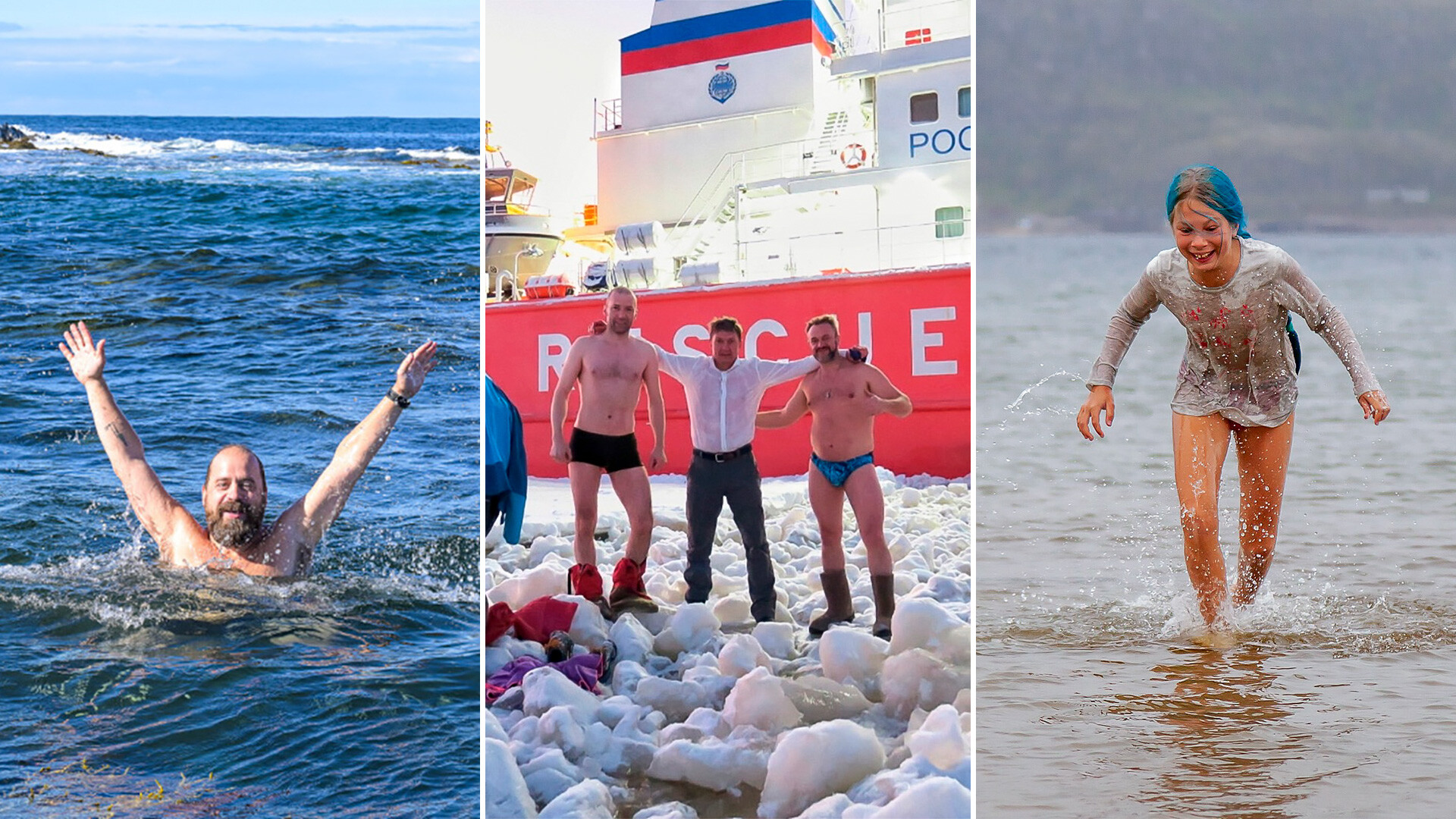
“At first, it was very difficult to get in: my muscles cramped up, my breathing paused. But then I slipped on a rock and just went underwater,” Alexey says.
Many tour companies organizing trips to the north include swimming in the Arctic Ocean in their program. The closest place to the European part of Russia, where you can take a dip in the cold waters, is the Murmansk Region. There, on the shore of the Barents Sea, on the Kola Peninsula, is the village of Teriberka, which is super-popular among tourists. It is also the only place on the shore of the Barents Sea that can be reached by car.
Ksenia Chesnokova is a travel blogger, who visited Teriberka with her children in 2019. “We didn’t plan on swimming, I don't like cold water – or swimming in general. But the kids are always ready to get into any kind of water. The weather was terrible: it was windy, gloomy; I stood on the shore in two puffer jackets – and that's on August 26! And, I made a bet with the kids as to whether they would be able to take a dip up to their shoulders,” says Ksenia. Her daughter Alice recalls the experience: “I quickly ran in and almost immediately ran out, so I almost didn't have time to feel anything. But it was terribly cold, and my feet went numb immediately.” Ksenia's son Grisha also has memories that discourage him from ever wanting to repeat the ordeal: “When you go into the water, it’s very, very cold. Then, of course, you get used to it, but I wouldn't go swimming there again.”
Alexey Zhirukhin is also a travel blogger. In 2020 he had a chance to swim in the Barents Sea. “We traveled to the northernmost point of the European part of Russia – Cape Nemetsky in the Murmansk region. It was summer, +20C outside, and the water was only +5C degrees. But I always say: I am a simple man – if I see water, I start swimming. At first, it was very difficult to get in, my muscles cramped up, my breathing stopped, but I slipped on a rock and went under, so I had no time to change my mind. And, after swimming, you feel a huge burst of energy,” Alexey says.
Alexander Yelikov is an Arctic swimming instructor and tour guide. He has set more than 10 world records in the Arctic Circle, and has a popular blog on Instagram. He practices cold conditioning all year round.
“I traveled by car from Murmansk to Chukotka along the Northern Sea Route and drove out to the coast. The most memorable swim was at Cape Chelyuskin, the northernmost continental point in Eurasia. It was in 2013, and we became the first in the history of auto travelers to get there by car. Right on the spot, we decided to go swimming with the whole team, found a crack in the ice and cleared it with shovels from chipped ice pieces. We then put a rail across the crack to hold on to, and everyone took turns plunging in,” Alexander says.
The extreme traveler also got a chance to swim in an icebreaker’s footprint. “I had long dreamed of this, and often encountered icebreakers in the Arctic, but I have never had the chance to swim in their actual footprints. And then, one day in winter, a whole company of cold conditioning fans gathered together. Immediately, after the icebreaker passed by, we made a pool in the footprint, left by it. The corridor was essentially a mess of ice and snow – we quickly cleared the area and took a dip with the ship in the background,” he says.
“The feeling when you go into the water... is breathtaking. It's all about making up your mind. After that – it's all good, a sudden rush of heat and energy. The most vivid sensations are not when you get into the water, but when you get out – the high, the adrenaline, the crazy emotions. When you experience these feelings, of course, you want to swim in all the famous places. However, you have to realize that the weather in the Arctic is always hostile. Even when it’s not very cold, the wind is terrible. When you get out of the water, you don't just freeze, you are literally covered in ice and you can get frostbite instantly. So, sometimes, I had to postpone my swimming sessions,” Alexander explains.
Dear readers,
Our website and social media accounts are under threat of being restricted or banned, due to the current circumstances. So, to keep up with our latest content, simply do the following:
If using any of Russia Beyond's content, partly or in full, always provide an active hyperlink to the original material.
Subscribe
to our newsletter!
Get the week's best stories straight to your inbox